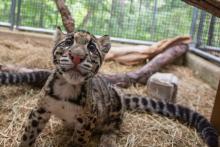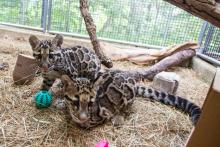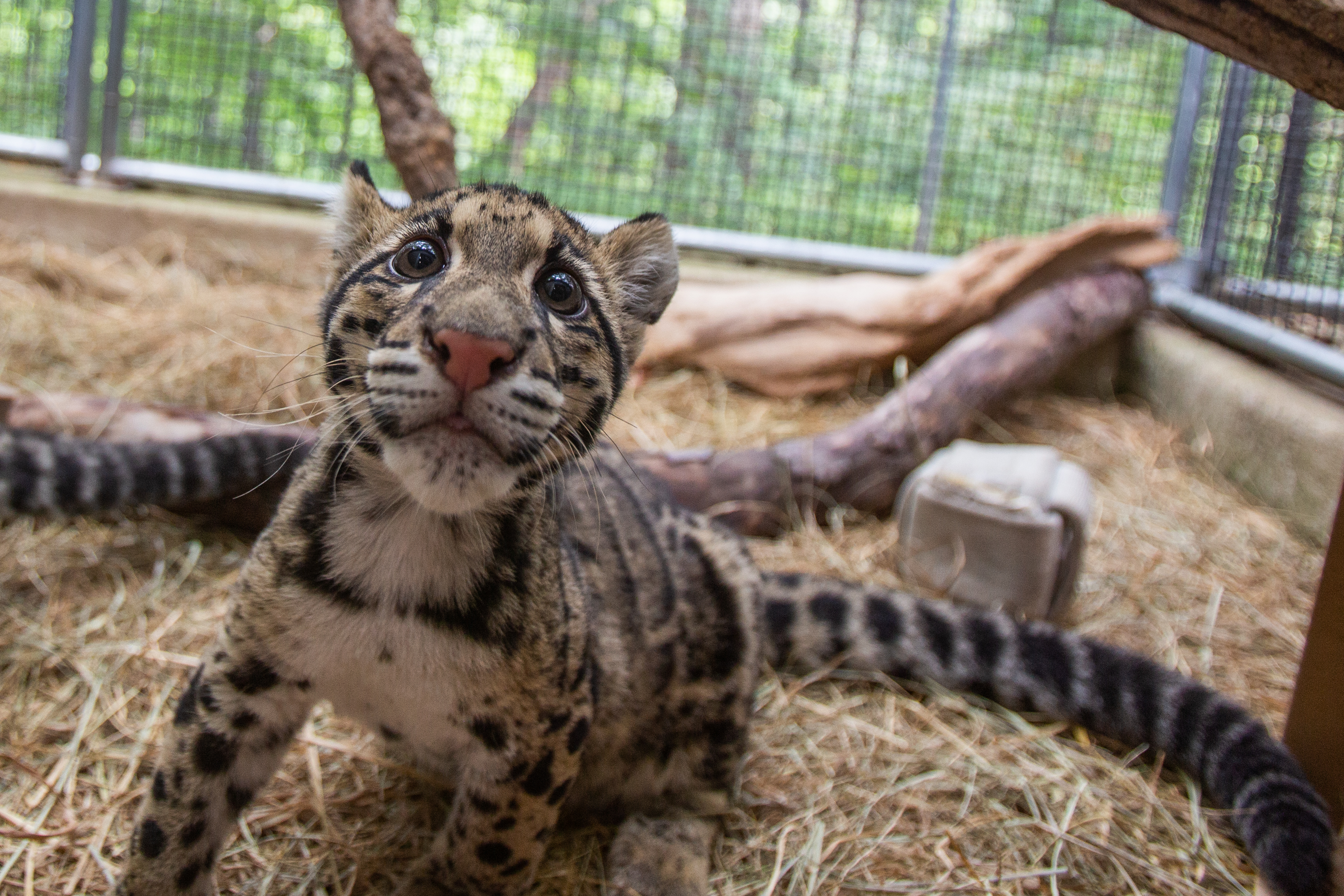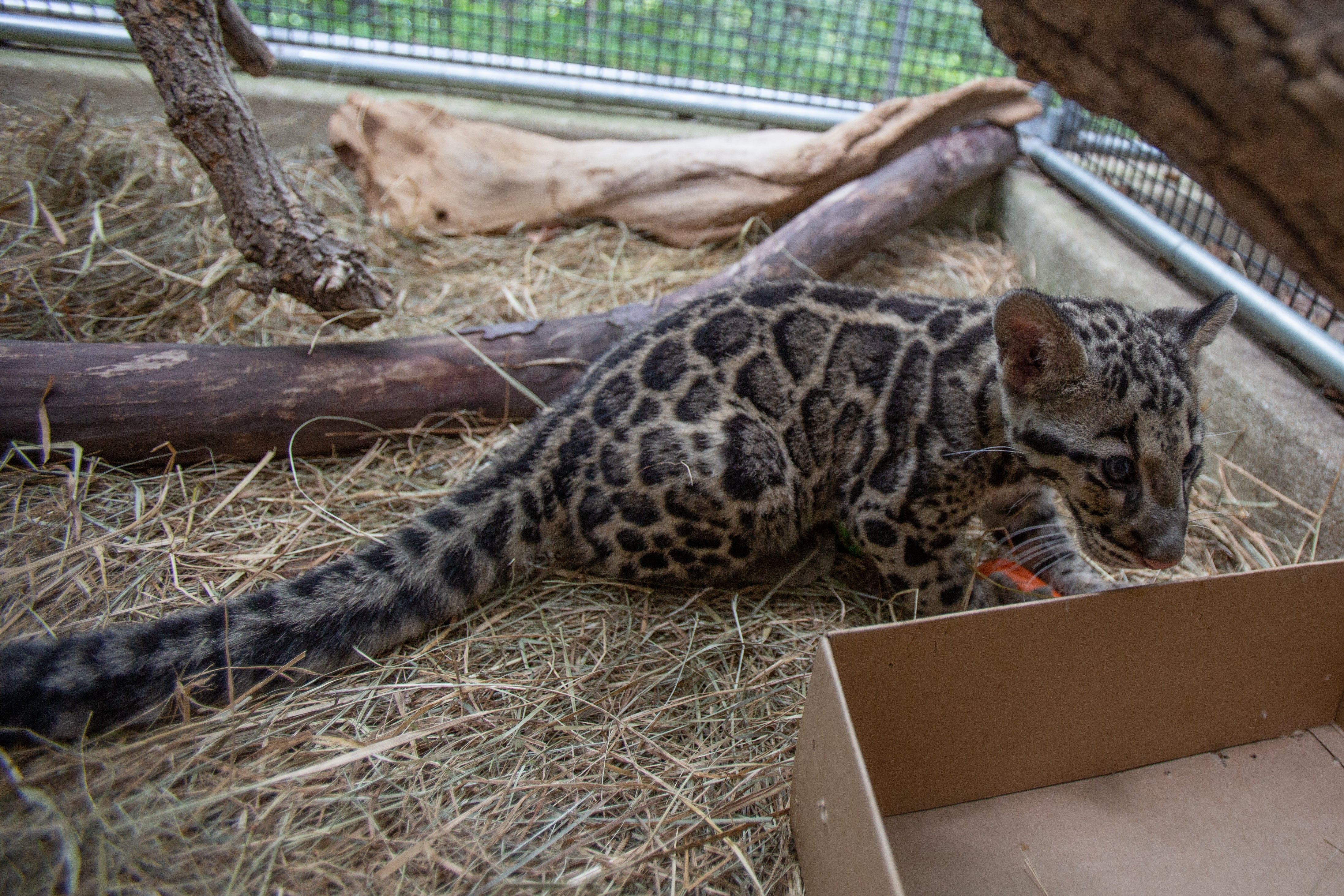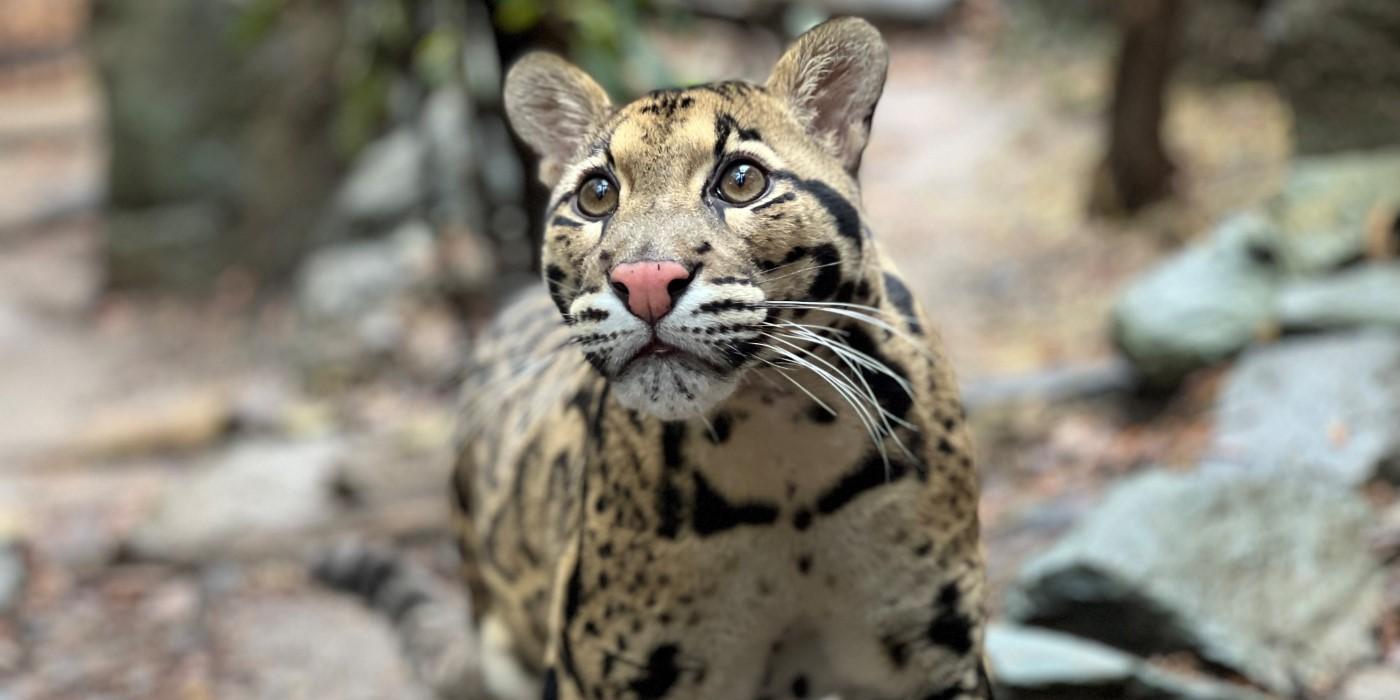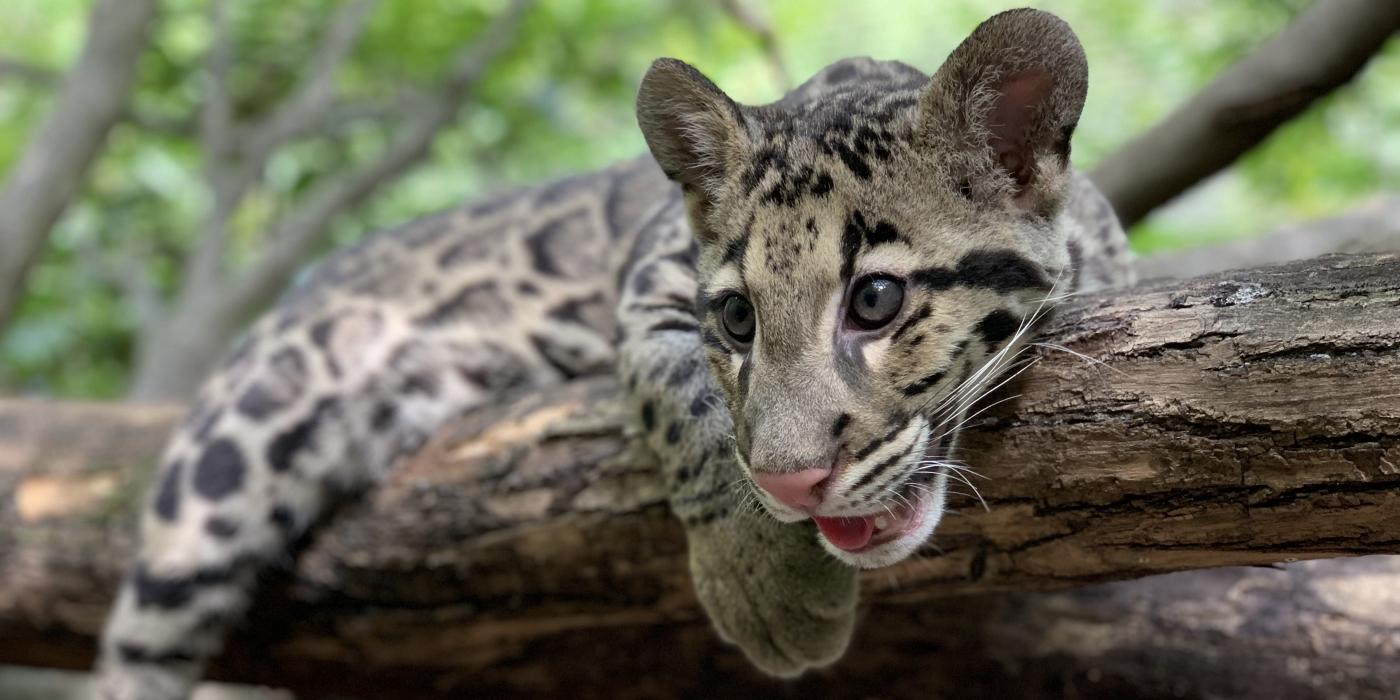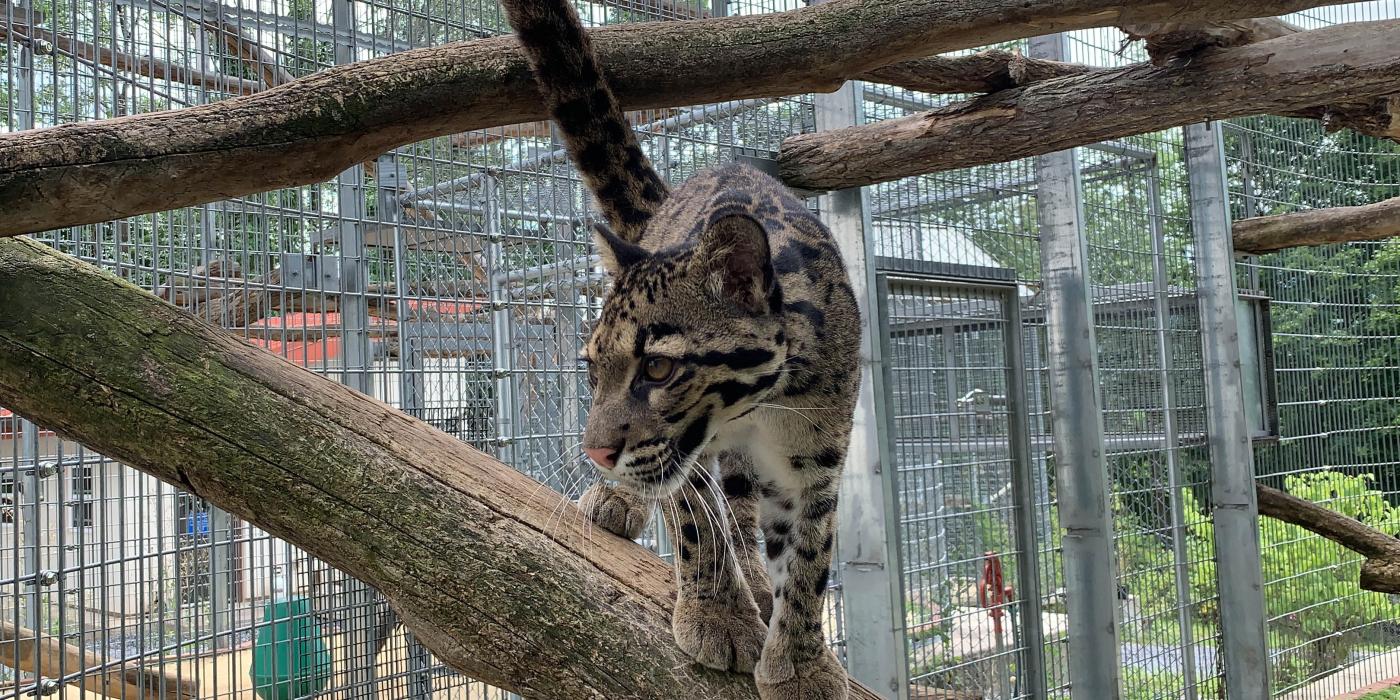First Ever Clouded Leopard Cubs Debut at the Smithsonian's National Zoo
For the first time, the Smithsonian’s National Zoo is home to rare clouded leopard cubs. The two cubs are the newest residents on the Zoo’s Asia Trail and will make their public debut Wednesday, Sept. 11. The Zoo has been home to adult clouded leopards since 2006.
The cubs are a male named Paitoon and a female named Jilian. They were born April 29 and March 24, respectively, at the Nashville Zoo. Visitors will be able to see them for short periods of time during the morning at the clouded leopard exhibit from 10:30 a.m. to 11:30 a.m. The cubs are learning how to climb but will need to be supervised by keepers while they explore and acclimate to their new exhibit. As they become more independent, they will spend longer periods of time on exhibit until they no longer need keeper supervision, and visitors will be able to see them for much of the day.
“The cubs are extremely curious and precocious; they have been exploring and investigating every nook-and-cranny of their new home,” said Michael Brown-Palsgrove, curator of Asia Trail. “It’s a great time to visit the clouded leopard exhibit to see them and learn about all our conservation efforts here and in Thailand.”
Clouded leopards are arboreal and have large paws with sharp claws and long tails that help them adeptly navigate forest canopies of Southeast Asia. The Zoo’s energetic cubs spend most of their time perfecting their natural climbing abilities and wrestling and vocalizing to each other.
Keepers are training them to participate in their own daily and veterinary care. During meal times, keepers train the cubs to only approach their individual stations for food. They are also in the early stages of target training or teaching them to touch a target so keepers can look at different parts of their bodies. Finally, the cubs are training to hold still for vaccinations and health exams.
Paitoon and Jilian will live together as a socially bonded pair but will not breed when they are adults. Although they were born to different parents, they are not an ideal genetic match. Clouded leopards are usually hand-raised as cubs to increase the chances they will survive to adulthood and are paired with their future mates by the time they are 1 year old.
The Zoo and Smithsonian Conservation Biology Institute (SCBI) have been studying clouded leopard behavior, biology and ecology for decades. In 1981, SCBI welcomed the first cub born at the research facility. In the decades that followed, its scientists and keepers studied the species to create an insurance population against extinction. In 2010, a new breeding and science center was completed at SCBI that can house up to 10 clouded leopards. One of SCBI’s research focuses has been on creating assisted reproductive technologies to use as tools to help the species.
SCBI reproductive biologist JoGayle Howard was the first scientist to perform a successful artificial insemination in the species in 1992. Her legacy was built upon by SCBI scientists in 2015, when they performed the second successful artificial insemination using a new technique that required significantly fewer sperm cells than a classical artificial insemination. In 2017, SCBI scientists again made history by performing a third successful artificial insemination, this time using frozen sperm on a female clouded leopard named Tula living at the Nashville Zoo. The resulting cub, Niran, gave birth this year and her offspring is Jilian, one of the cubs living at the Zoo. The three generations of clouded leopards have proven that scientists can use artificial insemination as one tool to help keep the population of clouded leopards in human care genetically healthy.
In addition to studying clouded leopard biology, SCBI scientists and keepers have helped develop the best methods to breed, raise and care for the species. During the 1990s, scientists found that clouded leopards raised together from a very young age greatly reduced the chances of aggression between them and increased the chances they would breed successfully as adults. Since the number of clouded leopards in human care at the time was very small, scientists needed every cub born to survive. As a result, the Clouded Leopard Species Survival Plan (SSP) recommended hand-rearing cubs and pairing males and females at a very young age.
Research at SCBI’s Endocrine Lab also helped establish guidelines for caring for clouded leopards. For example, these arboreal cats breed more successfully when they live in habitats that provide a minimum of 15 feet to climb vertically. Currently, scientists are examining effective contraceptive measures in the species, as decades of research and collaborations have led to a more sustainable population in zoos and the need to prevent bonded pairs from breeding too often.
In 2002, the Smithsonian’s National Zoo and Conservation Biology Institute, in collaboration with Nashville Zoo and Point Defiance Zoo in the U.S. and the Khao Kheow Zoo in Thailand, founded the Thailand Clouded Leopard Consortium. The consortium has been an integral part of the sustainability of clouded leopards worldwide. Its members work together to increase the genetic diversity of the species living in zoos in the U.S. and to study clouded leopards in much greater numbers at the Khao Kheow Zoo.
Due to all of the dedicated conservation efforts, the population of clouded leopards in human care around the world is gradually becoming more stable, which has allowed the SSP to begin giving females the opportunity to raise cubs on their own and to create non-breeding pairs for exhibit, such as Jilian and Paitoon. These pairs act as ambassadors for their wild counterparts teaching visitors about this elusive species.
Clouded leopards are listed as vulnerable in the wild by the International Union for Conservation of Nature. It is estimated that there are about 10,000 clouded leopards in the wild. Threats to the species include habitat fragmentation, deforestation and illegal wildlife trafficking.
The Zoo will continue to provide updates on the cubs through Facebook, Twitter and Instagram.
Related Species:
Image Gallery
